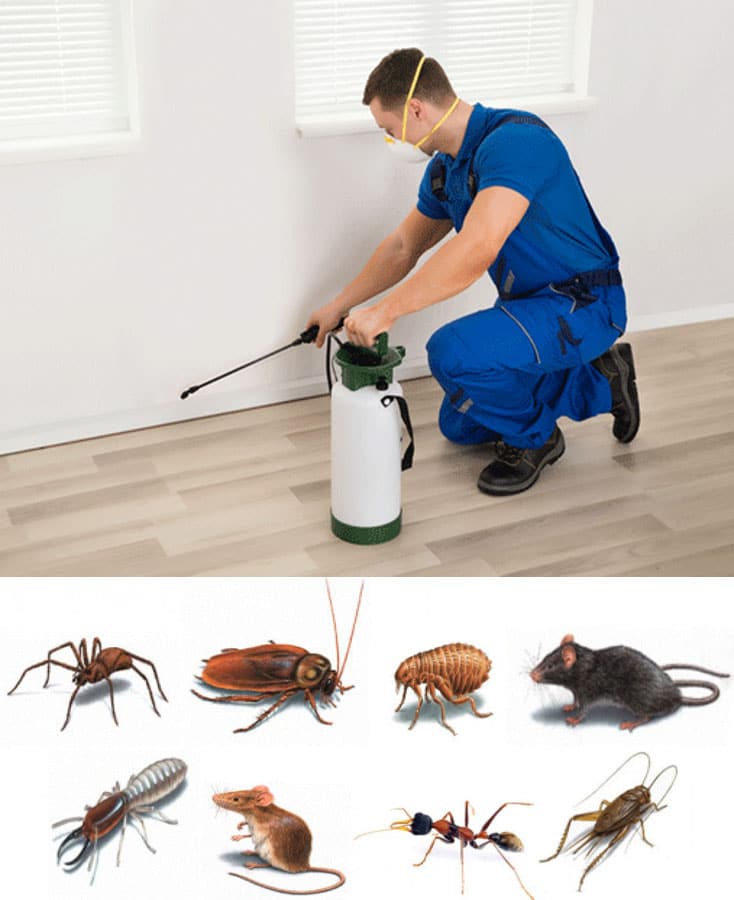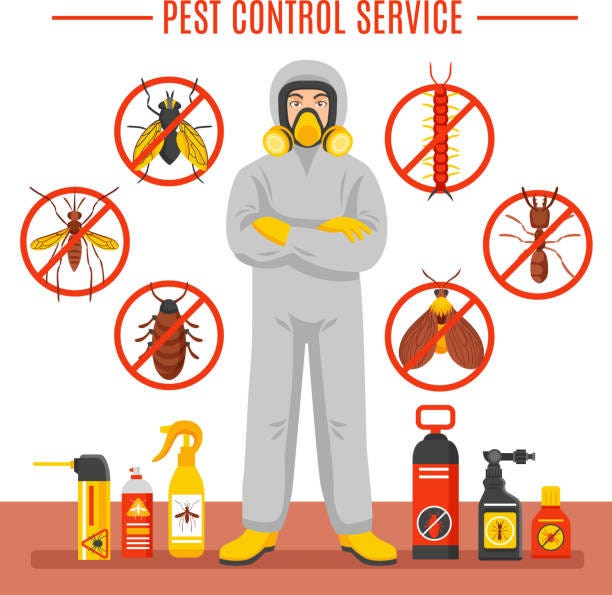Reputable A1 Bed Bug Exterminator Charlotte - Get Rid of Bed Bugs Quick
Reputable A1 Bed Bug Exterminator Charlotte - Get Rid of Bed Bugs Quick
Blog Article
Bed Bug Therapy Malfunction: Comparing Chemical Vs. Non-Chemical Solutions
In the realm of bug control, specifically when handling the relentless concern of bed pests, the option between chemical and non-chemical therapy solutions can be a critical one. Both approaches supply unique advantages and disadvantages, influencing variables such as performance, security factors to consider, and general expense. By checking out the nuanced information of each method, a clearer understanding of which course to seek in addressing a bed bug problem can be obtained.
Effectiveness of Chemical Treatments
Chemical treatments for bed insect invasions have been commonly identified for their powerful and quick effectiveness in eliminating these bugs. When taking into consideration the performance of chemical treatments, it is vital to comprehend that they can supply a extensive and quick remedy to a bed bug problem.
Moreover, chemical treatments have the benefit of using recurring impacts, suggesting that they can remain to get rid of bed insects even after the preliminary application. This recurring action is especially useful in combating any kind of potential re-infestations. Additionally, the rapid action of chemical therapies can bring relief to people encountering severe bed pest invasions, allowing them to restore control of their space rapidly.
Security Interest In Chemical Solutions
One critical aspect that requires careful consideration when using chemical remedies for bed insect treatment is making sure the safety and security of passengers and the atmosphere. While chemical treatments can be efficient in eliminating bed bugs, they might pose threats if not managed correctly. Among the key safety and security interest in chemical remedies is the possible harm they can cause to human health. Exposure to particular chemicals used in bed pest treatments can lead to breathing problems, skin irritability, or various other unfavorable responses, especially in individuals with pre-existing problems or sensitivities. In addition, inappropriate application or dose of chemical pesticides can lead to toxic deposits remaining in the cured location, presenting long-term health risks to occupants.
In addition, the environmental influence of chemical remedies is another considerable consideration. Some chemicals made use of in bed bug treatments might be harmful to beneficial bugs, wild animals, and environments if they leach into the soil or water systems. It is necessary to utilize chemical therapies carefully, following safety guidelines, and taking into consideration much less hazardous alternatives to alleviate these threats and guarantee the secure and efficient management of bed pest invasions.
Advantages of Non-Chemical Techniques
Considering the potential security concerns and ecological effect connected with chemical remedies for bed bug treatment, discovering non-chemical approaches presents a promising option with several distinctive benefits. Non-chemical therapies are environmentally pleasant, as they do not contribute to air or water air pollution, making them a sustainable choice for insect control.
In addition, non-chemical solutions can be reliable in targeting bed bugs, including hard-to-reach areas where chemical treatments may not penetrate - A1 pest control services charlotte. Techniques such as warmth treatment, vacuuming, vapor cleansing, and mattress coverings give thorough eradication without the usage of dangerous chemicals.
Limitations of Non-Chemical Treatments

Furthermore, non-chemical treatments commonly call for numerous applications to achieve successful removal. This can be time-consuming and might not always guarantee full removal of all bed bugs and their eggs, specifically in hard-to-reach or surprise places.
In addition, the success of non-chemical therapies greatly relies upon appropriate application and thoroughness, which can be testing for individuals without expert expertise. Insufficient application of non-chemical approaches might result in incomplete eradication, leading to consistent problems and the demand for additional treatments.
As a result, while non-chemical treatments have their advantages, it is vital to recognize these restrictions and consider them when establishing one of the most effective technique for managing bed bug infestations.
Price Contrast: Chemical Vs. Non-Chemical Options
Offered the constraints related to non-chemical therapies, a necessary aspect to review in the context of bed pest administration is the cost contrast in between chemical and non-chemical check my reference choices. Chemical treatments commonly involve the application of insecticides by specialists, which can range from $250 to $900 per space, relying on the seriousness of the problem and the size of the area to be dealt with. In comparison, non-chemical treatments like warm therapy or vapor can be extra costly, with costs varying from $1,000 to $6,000 for a whole home. While the initial cost of chemical treatments may appear lower, numerous treatments may be called for to fully eradicate the infestation, potentially enhancing the overall price. On the other hand, non-chemical options might provide a more sustainable and environmentally friendly option, although they can be cost-prohibitive for some individuals. Inevitably, when taking into consideration the cost of bed insect therapy alternatives, it is essential to consider the upfront expenditures against the efficiency and lasting sustainability of the selected method.
Final Thought

Taking into consideration the prospective security worries and environmental impact linked with chemical solutions for bed bug therapy, checking out non-chemical approaches presents an appealing choice with a number of unique benefits.Offered the restrictions associated with non-chemical therapies, an important mice infestation facet to assess in the context of bed bug administration is the expense contrast between chemical and non-chemical alternatives. In comparison, non-chemical therapies Discover More Here like heat therapy or vapor can be more expensive, with costs varying from $1,000 to $6,000 for a whole home. While the preliminary expense of chemical treatments may appear lower, multiple treatments might be needed to fully eradicate the problem, possibly boosting the total price.In final thought, when comparing chemical and non-chemical bed insect treatment options, it is important to consider effectiveness, security, advantages, limitations, and cost.
Report this page